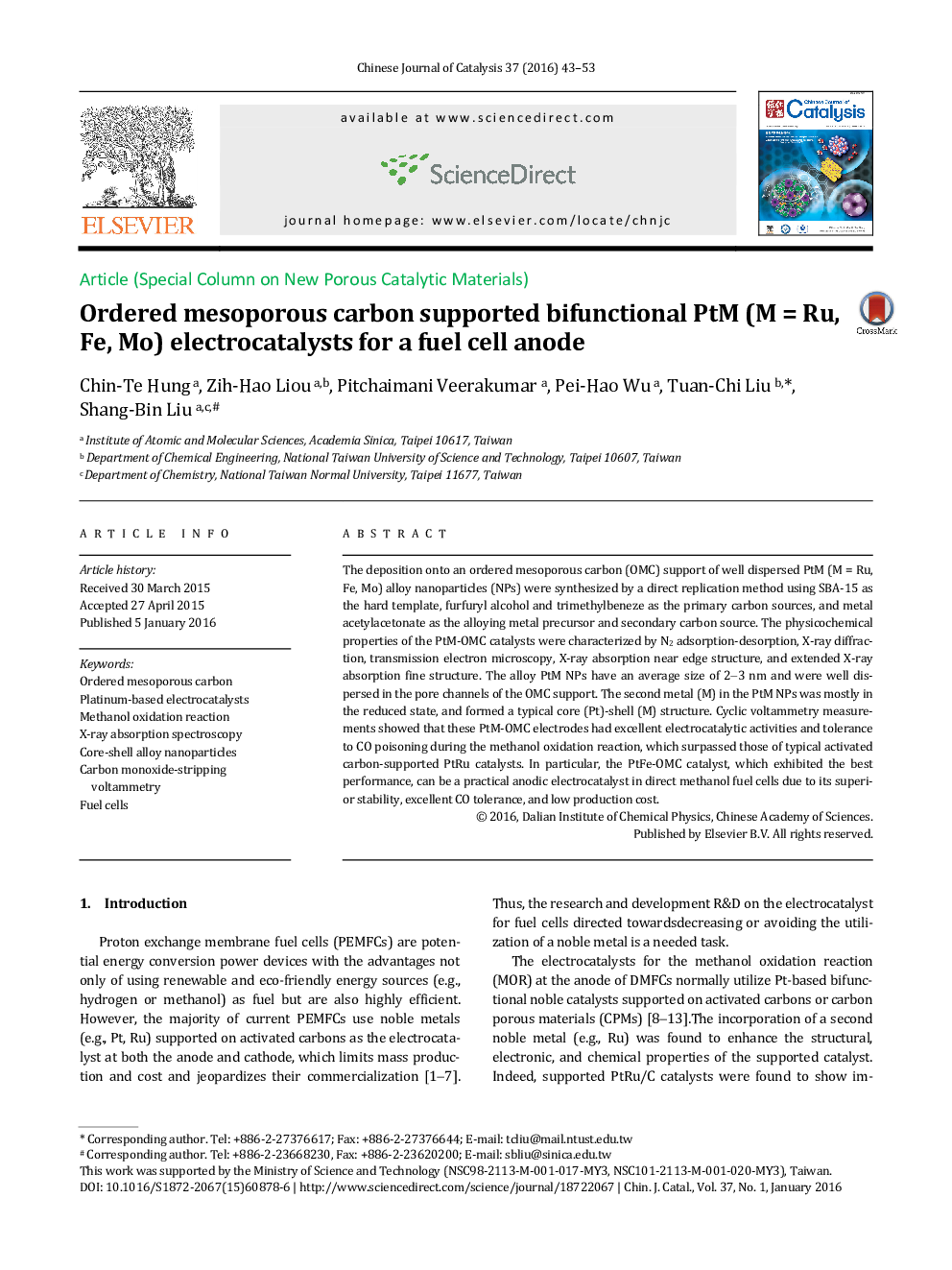| Article ID | Journal | Published Year | Pages | File Type |
|---|---|---|---|---|
| 59743 | Chinese Journal of Catalysis | 2016 | 11 Pages |
The deposition onto an ordered mesoporous carbon (OMC) support of well dispersed PtM (M = Ru, Fe, Mo) alloy nanoparticles (NPs) were synthesized by a direct replication method using SBA-15 as the hard template, furfuryl alcohol and trimethylbeneze as the primary carbon sources, and metal acetylacetonate as the alloying metal precursor and secondary carbon source. The physicochemical properties of the PtM-OMC catalysts were characterized by N2 adsorption-desorption, X-ray diffraction, transmission electron microscopy, X-ray absorption near edge structure, and extended X-ray absorption fine structure. The alloy PtM NPs have an average size of 2−3 nm and were well dispersed in the pore channels of the OMC support. The second metal (M) in the PtM NPs was mostly in the reduced state, and formed a typical core (Pt)-shell (M) structure. Cyclic voltammetry measurements showed that these PtM-OMC electrodes had excellent electrocatalytic activities and tolerance to CO poisoning during the methanol oxidation reaction, which surpassed those of typical activated carbon-supported PtRu catalysts. In particular, the PtFe-OMC catalyst, which exhibited the best performance, can be a practical anodic electrocatalyst in direct methanol fuel cells due to its superior stability, excellent CO tolerance, and low production cost.
The deposition onto an ordered mesoporous carbon (OMC) support of weil dispersed PtM (M = Ru, Fe, Mo) alloy nanopartides (NPs) was directly replicated. These PtM-OMC catalysts use a cost-effective second metal such as Fe and passess uniform (2–3 nm) and highly dispersed alloy NPs catalysts that exhibit superior electrocatalytic performance and excellent toleranee to COpaisaning during the methanol oxidation reaction.Figure optionsDownload full-size imageDownload as PowerPoint slide
